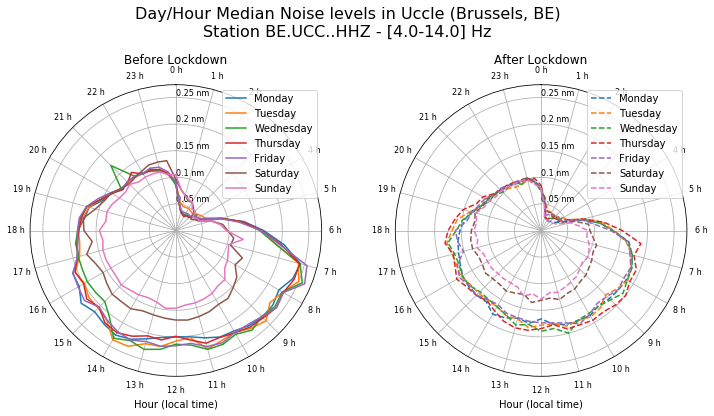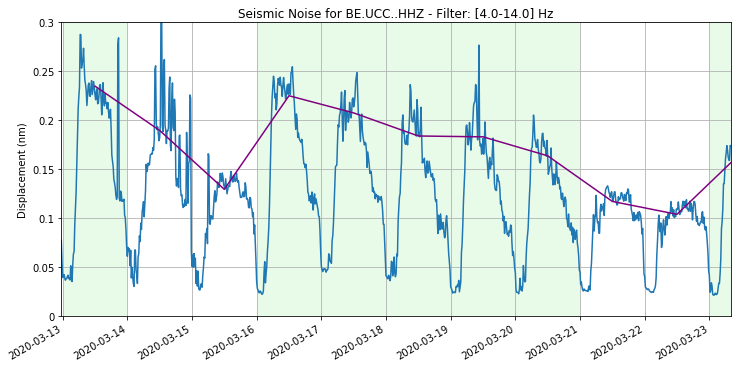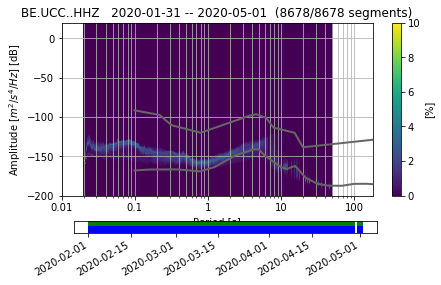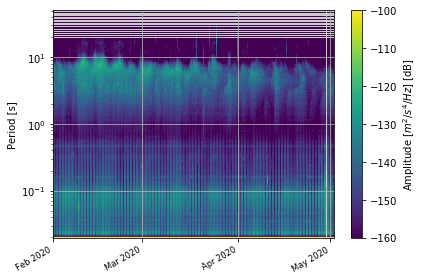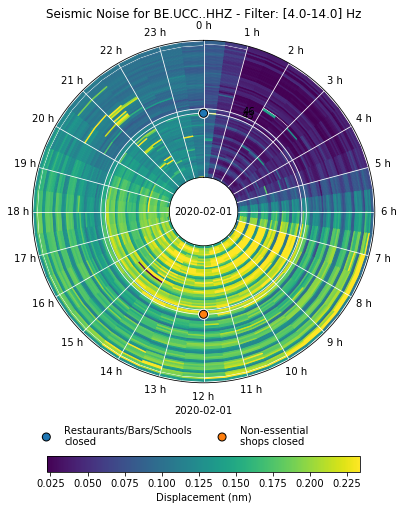an example simple tutorial for getting seismic data, computing the power spectral densities, extracting the RMS and plotting
Required:
- python
- obspy (and its dependencies)
- pandas
- jupyter
- notebook
- tqdm
this should be easy to set up in a conda env: conda create -c conda-forge -n covid python=3.7 obspy pandas jupyter notebook tqdm
Author: Thomas Lecocq @seismotom, Fred Massin @fmassin
Run it interactively on mybinder.org
This was the output of the original code shared on Twitter end of March 2020. The following data shows the effect of the Social Distancing measures from the Belgian Government (2020-03-16 at midnight, and 2020-03-18 at midday):
The code has evolved and includes several new useful plots for interpreting the time series.
Changes per day of week & time of day, before and after lockdown:
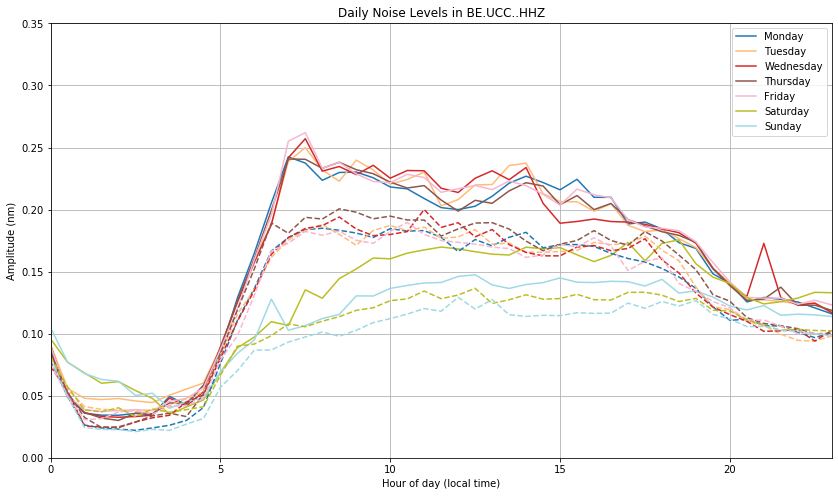
Changes per day of week & time of day, before and after lockdown, visualized as
a 24-hour clock:
